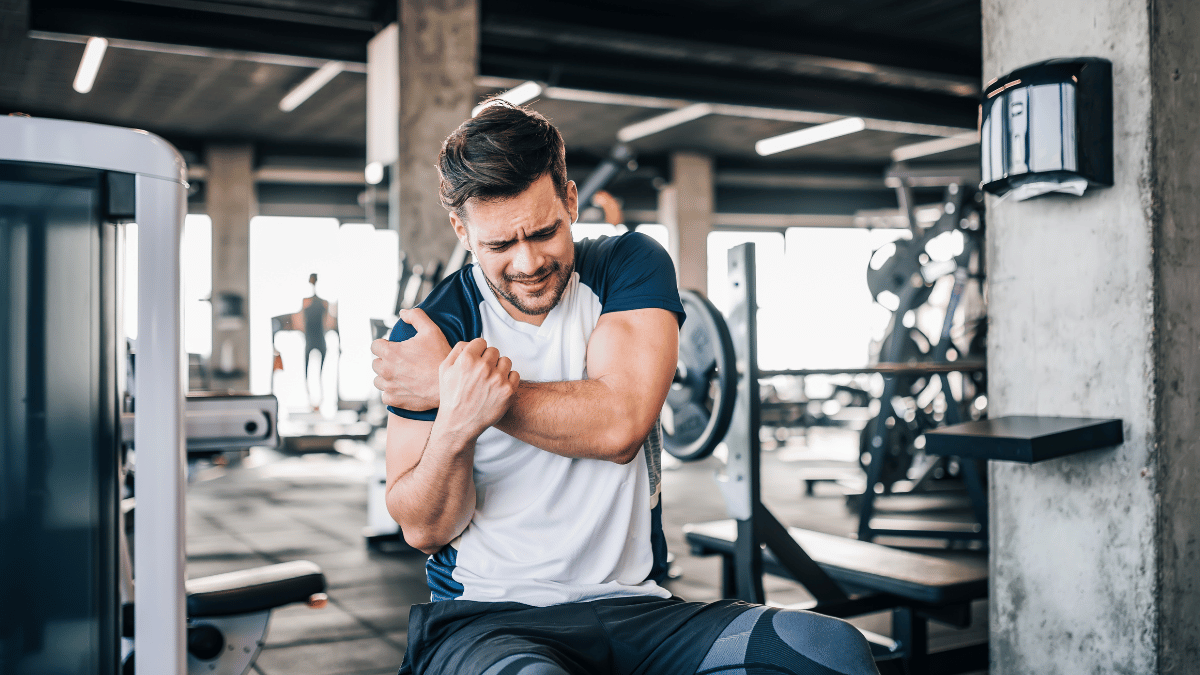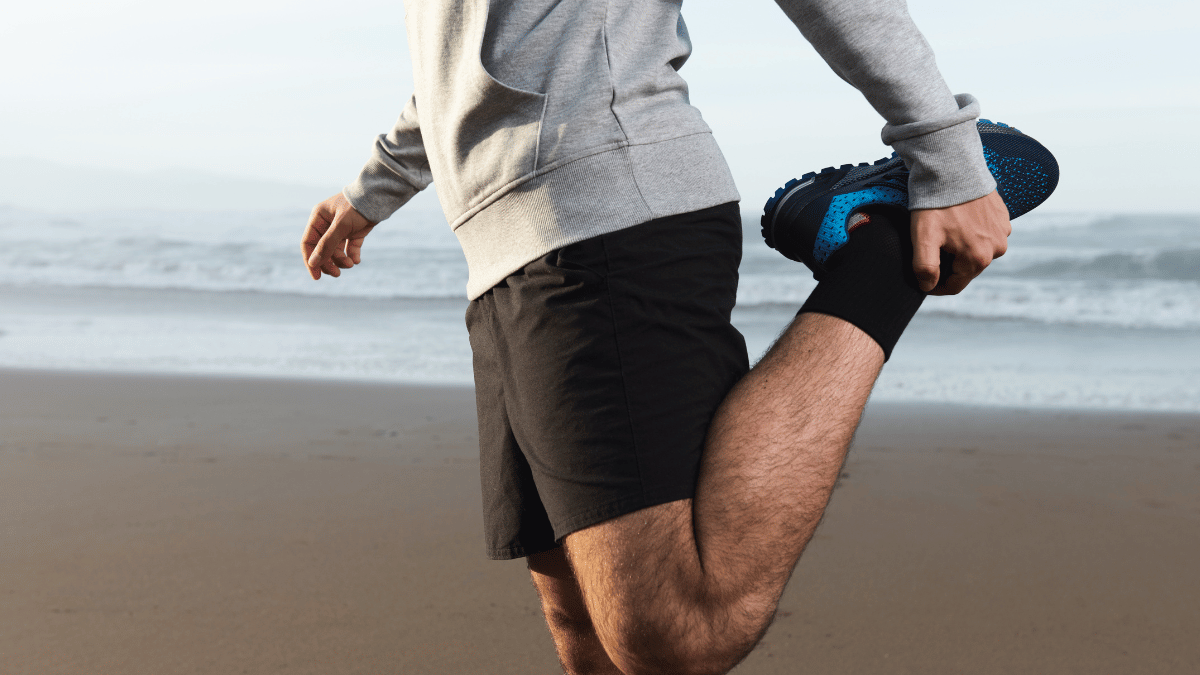How to Prevent Common Workout Injuries in Colorado
Living in Colorado means living actively, early-morning trail runs, after-work strength classes, weekend ski trips, and spontaneous hikes in the foothills. Whether you're downtown in Denver or out exploring the Rockies, movement is a way of life here. But with that active lifestyle comes an increased risk of injury especially when training intensity exceeds preparation.
If you've ever powered through a workout only to be sidelined by nagging pain or a pulled muscle, you’re not alone. Even seasoned gym-goers and athletes are vulnerable to injuries that could have been prevented with the right strategy. Injury prevention training isn’t just for those recovering it's a smart, proactive approach that helps everyone from casual hikers to competitive lifters stay consistent, strong, and pain-free.
In this guide, we’ll break down why workout injuries happen, the most common injuries among active Coloradans, and how to avoid them with simple, effective strategies. You'll also learn how working with a trainer at Fight Gravity Fitness can help you stay in motion and out of recovery mode.
Meet our Denver
Personal Trainers
TL;DR: Living an active life in Colorado means greater injury risk whether you're hiking trails, skiing, or lifting at the gym. Workout injuries often stem from poor form, tight or weak muscles, overtraining, and insufficient recovery especially when factoring in altitude’s impact on hydration and fatigue. The most common injuries include knee pain, lower back strain, ankle sprains, shoulder issues, and overuse injuries.
The key to staying injury-free is injury prevention training: a proactive blend of mobility work, corrective movements, strength training, and smart recovery. Prioritize warm-ups, focus on form, train full-body movement patterns, and balance strength with flexibility.
Fight Gravity Fitness helps Denver locals train smarter not harder with personalized programs designed to keep you strong, resilient, and active year-round.
Also Read:
Mobility Training for Everyday Life
Achieving Balance in Your Fitness Routine: Why Fight Gravity Fitness Is the Perfect Choice
Why Do Workout Injuries Happen?
Even experienced exercisers can find themselves injured when any of the following issues creep into their training:
Form breaks down under fatigue – Good technique goes out the window when you’re tired, which can lead to strain or imbalance.
Mobility limitations are ignored – Tight hips, ankles, or shoulders can lead to compensations that overload other joints.
Muscle imbalances develop – For example, quads overpowering glutes or one side of the body doing more work than the other.
Too much intensity, too fast – Sudden increases in volume or weight without proper buildup increase injury risk.
Inconsistent recovery – Skipping rest days, sleep, or hydration impairs your body’s ability to repair and adapt.
In Colorado, altitude adds another layer. Living and training at higher elevations affects oxygen levels and hydration, which can silently raise the risk of overuse injuries and fatigue-related breakdowns.
Most Common Injuries for Active Coloradans
Between outdoor adventures and high-intensity gym sessions, Colorado residents put their bodies to the test daily. Here are the injuries we see most frequently:
Knee pain – Including runner’s knee, meniscus irritation, or patellar tracking issues.
Lower back strain – Often from poor form during lifting or prolonged sitting during work hours.
Ankle sprains – Common during trail runs, hiking on uneven terrain, or dynamic sports.
Shoulder injuries – Such as impingements or strains from overhead lifts, pullups, and pushups.
Overuse injuries – Tendinitis, shin splints, or stress fractures from doing too much without enough recovery.
These injuries may seem minor at first, but without attention, they can snowball into long-term limitations. The good news? Most are preventable with a thoughtful training strategy that emphasizes movement quality, balance, and smart progression.
“Your body should be ready for the mountains, not recovering from them. Train smart so you can keep showing up for every trail, slope, and summit.”
What Is Injury Prevention Training?
Injury prevention training is more than just stretching or foam rolling—it’s an integrated approach to fitness that helps your body perform safely under stress.
It focuses on:
Corrective movement patterns – Fixing compensations and improving how you move day-to-day.
Mobility and flexibility – Addressing tight joints and tissues that limit range of motion.
Stabilizer strength – Building strength in underused, supportive muscles like the glutes, deep core, and rotator cuff.
Balance and proprioception – Training your nervous system to better control your body.
Fatigue management – Teaching proper form under tired conditions to prevent breakdown.
At Fight Gravity Fitness, we weave these principles into every program, tailoring injury prevention to your lifestyle whether you're training for your next 14er, chasing after toddlers, or grinding through demanding workdays.
How to Stay Injury-Free in Your Workouts
1. Warm Up With Purpose
A few arm circles and a light jog aren't enough. Use dynamic warm-ups that actively prepare your joints and nervous system. Think glute bridges, shoulder activation drills, and leg swings movements that mimic what you’ll actually do in your workout.
2. Focus on Form, Not Ego
It’s tempting to chase heavy lifts or complex exercises, but poor technique under load is one of the fastest ways to get hurt. A trainer ensures your movement stays clean—even when you’re fatigued or pushing your limits.
3. Train Movement Patterns, Not Just Muscles
Shift your mindset from “arm day” to “push, pull, hinge, squat, carry.” Functional training patterns are not only more effective, they reduce injury risk by training your body to move efficiently in real-world scenarios.
4. Balance Strength and Mobility
Being strong but stiff, or mobile but weak, increases your risk of injury. A smart program balances mobility (hip openers, shoulder dislocates, thoracic rotation) with strength (deadlifts, rows, pushups) to build resilient joints.
5. Recover Intentionally
Recovery isn’t just a passive process—it’s part of your training. Prioritize sleep, hydration, and structured rest days. Use tools like foam rollers, massage guns, and even short walks to flush soreness and improve circulation.
Injury Prevention Training in Denver: Why It Matters
Living in Denver comes with unique demands from elevation and dry climate to packed workweeks and jammed fitness schedules. The key to staying active and injury-free isn’t doing less it’s training smarter.
Custom injury prevention training programs in Denver help you:
Identify movement inefficiencies
Address chronic tightness or imbalance
Prevent injuries before they happen
Stay consistent with workouts and outdoor activities
Reduce downtime due to pain or fatigue
Final Thoughts: Stay in the Game, Not on the Sidelines
Injuries don’t just disrupt your workouts, they mess with your lifestyle, goals, and momentum. But they’re not inevitable. With smart programming and the right support, you can avoid common setbacks and stay fully engaged in the active life you love.
Want to train smarter and stay injury-free?
Fight Gravity Fitness offers one-on-one and mobile injury prevention training in Denver tailored to your goals, activity level, and lifestyle.
FGF’s Client
Success Stories
FAQS
Why are workout injuries more common in Colorado?
Colorado’s active lifestyle combined with high altitude, dry climate, and varied terrain creates extra physical demands. Whether you’re trail running, skiing, or lifting, the intensity of movement often exceeds preparation, increasing the risk of strain, fatigue, or overuse injuries.
What are the most common workout injuries for active Coloradans?
Some of the most frequent issues include:
Knee pain (runner’s knee, meniscus strain)
Lower back strain from poor lifting form or prolonged sitting
Ankle sprains during trail runs or hikes
Shoulder injuries from overhead lifts or pushups
Overuse injuries like tendinitis, shin splints, or stress fractures
What is injury prevention training?
Injury prevention training is a proactive, strategic approach to fitness. It includes:
Corrective movement patterns
Mobility and flexibility work
Stabilizer strength training (core, glutes, rotator cuff)
Balance and proprioception drills
Form and fatigue management
It’s not just about stretching it’s about training smarter so your body performs well under stress.
How can I avoid injuries during workouts?
Top strategies include:
Warming up with purpose (dynamic mobility work)
Focusing on form over weight or intensity
Training movement patterns (push, pull, hinge, squat) rather than isolated muscles
Balancing strength and flexibility
Prioritizing recovery through sleep, hydration, rest days, and tools like foam rollers
Does elevation affect injury risk?
Yes. Higher elevation means less oxygen and faster dehydration, which can lead to fatigue-related form breakdown and higher injury risk if not managed properly. Hydrate well and give yourself time to adapt when training hard in Colorado’s altitude.
How can a personal trainer help with injury prevention?
A qualified personal trainer can:
Spot and correct faulty movement patterns
Build programs that balance intensity and recovery
Help improve mobility and strength in key stabilizer muscles
Customize workouts based on your goals, limitations, and lifestyle
At Fight Gravity Fitness, our trainers specialize in injury prevention for Colorado’s active residents.
Can I still benefit from injury prevention training if I’m not an athlete?
Absolutely. Injury prevention is for everyone, from casual hikers to desk workers to new parents. It improves functional strength, reduces daily aches, and keeps you moving confidently whether you’re summiting a peak or chasing toddlers.
Nicholas Butler
Founder, Fight Gravity Fitness
Nick Butler is a passionate fitness professional who believes that better movement leads to a better life. As the founder of Fight Gravity Fitness, he specializes in helping busy professionals build strength, restore mobility, and enjoy an active, pain-free lifestyle. Nick holds certifications as a NASM Certified Personal Trainer, TRX Certified Instructor, Silver Sneakers Certified, and is CPR Certified. With years of experience and a focus on functional movement, Nick brings a supportive, practical approach to fitness that gets results without the hype.







